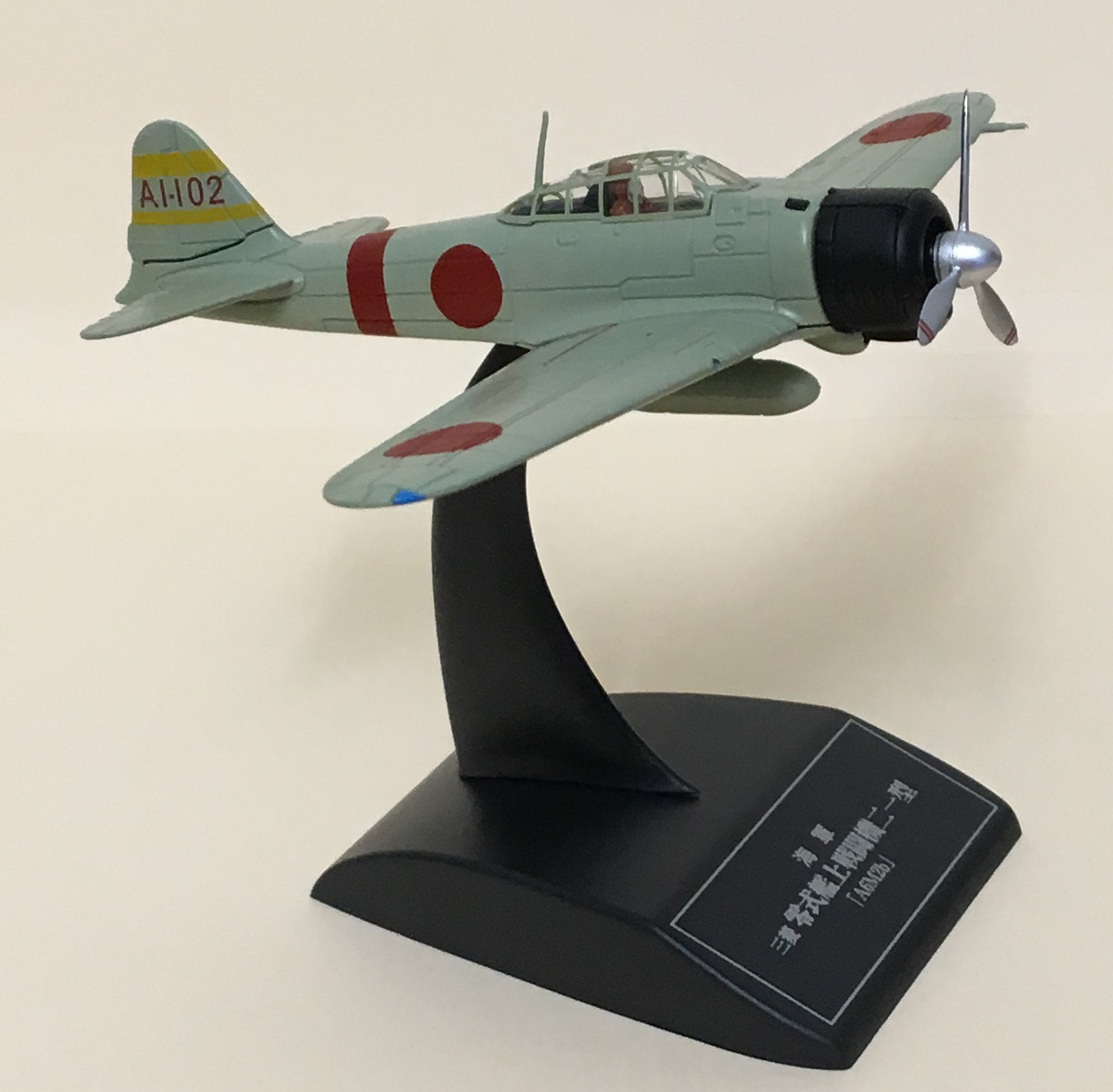FACTOIDS & TRIVIA
Developed from the A5M “Claude”, the Mitsubishi A6M Type 0 Reisen
"Zero" (allied code
name “Zeke”) was a formidable long-range fighter during the
early years of World War II. It evolved during the course of the war
into several variants. All the variants were agile, relatively fast,
had a low stall speed, could climb quickly and had remarkable range. It
followed the "light as a kite" design paradigm whereby all excess
weight was removed to give the Zero its legendary flight
characteristics. However, its superiority came at cost. First, it had
no armor or self-sealing fuel tanks and one or two hits from an
opponent would often time send a Zero down in flames. Second, it used
mechanical rather than hydraulic controls so that control surfaces
would be unresponsive at airspeeds above 410 mph. The Zero could not
outdive allied aircraft due to this flaw and this was exploited by
opponents who used "boom and zoom" tactics where they would attack from
above and dive away from the Zero then gain altitude and start the
process over again. Dogfighting a Zero in the early part of the war
usually ended up with the Zero victorious.
The
Zero first saw action in China in September 1940 and was the premier carrier-based plane with a 12:1 kill ratio.
However, after 1943 allied aircraft began to match and exceed the the
performance of the Zero. The model shown here is an example of the
earliest variant of the Zero, the A6M2b
Model 21. It has markings of a plane from the aircraft carrier Akagi
that attacked Pearl Harbor. With the addition of two 20-mm cannons, the
Zero possessed more firepower than the A5M which made it more
effective against the better armored allied aircraft. The
A6M2b's main
adversary was the U.S. Navy's Grumman F4F-4 Wildcat. Mitsubishi built
740 A6M2 aircraft with another 800 built by Nakajima. Here's a short video
clip of me flying the A6M2b against a Wildcat (sorry for the flickering).
MITSUBISHI
A6M2b Model 21 Reisen "Zeke"

Class: Fighter
Crew: 1
Engine: Nakajima NK1C Sakae-12 14-cylinder twin-row radial (940 hp)
Max Speed: 346 mph at 19,930 ft
Climb Rate: 3,100 ft/min
Service Ceiling: 32,800 ft
Range: 1,929 miles
Armament: 2 x .303 inch machine
gun
(fuselage mount)
2 x 20 mm cannon (wing mount)
2 x 130 lb bomb
Model Scale:
1:87
Back
to the Japanese
Combat Aircraft of WWII
Menu

